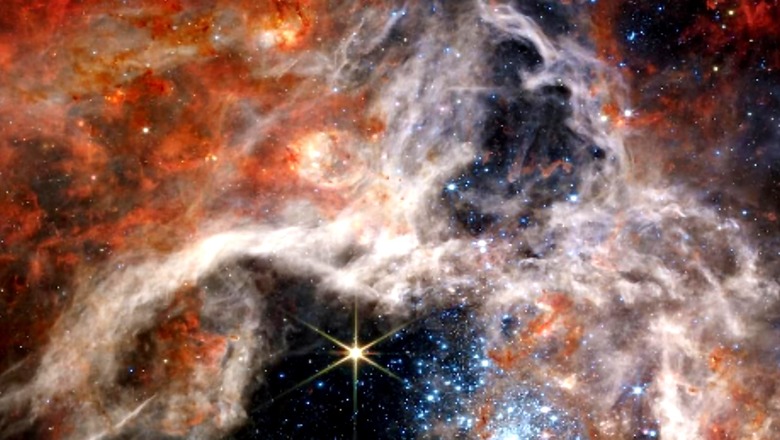
views
The James Webb Telescope recently captured a large gathering of young stars and cosmic dust that is popular among astronomers as the Tarantula Nebula. Located 1,61,000 light years away, the nebula is considered to be the largest and the brightest star-forming region in the group of galaxies near our Milky Way.
The images that have surfaced is the result of the James Webb Telescope’s three high-resolution infrared instruments – The Near-Infrared Camera (NIRCam), Near-Infrared Spectrograph (NIRSpec), and the Mid-Infrared Instrument (MIRI).
The Tarantula Nebula holds substantial matter of interest for astronomers since the nebula’s chemical composition mimics the composition of the universe’s “Cosmic Noon,” a region of gigantic star formation when the cosmos was only a few billion years old. At this time, the star formation was at its peak. With the rate of new star formations that Tarantula fosters, astronomers get a glimpse of what the universe was like during its High Noon period.
NASA shared the image of the nebula on Instagram. In the caption, the space agency wrote, “Take a moment to state into the thousands of never-before-seen young stars in the Tarantula Nebula. The James Webb Telescope reveals details of the structure and composition of the nebula, as well as dozens of background galaxies.”
Take a look at the image here:
View this post on Instagram
With NIRCam, the researchers were able to see the nebula’s cavity which is blistered with radiation emanating from a cluster of massive young stars. In the image, these radiations are visible as pale blue specs. The NIRSpec of the James Webb Telescope captured a star formation in action where it has kept itself insulated with a cloud of dust around. The MIRI detected the longer infrared wavelength that the faded hot stars were emanating.
The telescope, the most powerful ever made in the history of mankind, not only captured the nebula but also the myriad galaxies that are visible in the background. The James Webb Telescope will help astronomers decipher the questions about the cosmos that still remain unanswered, including the ones associated with star formation.
Read all the Latest Buzz News and Breaking News here

















Comments
0 comment